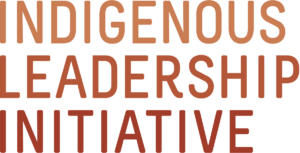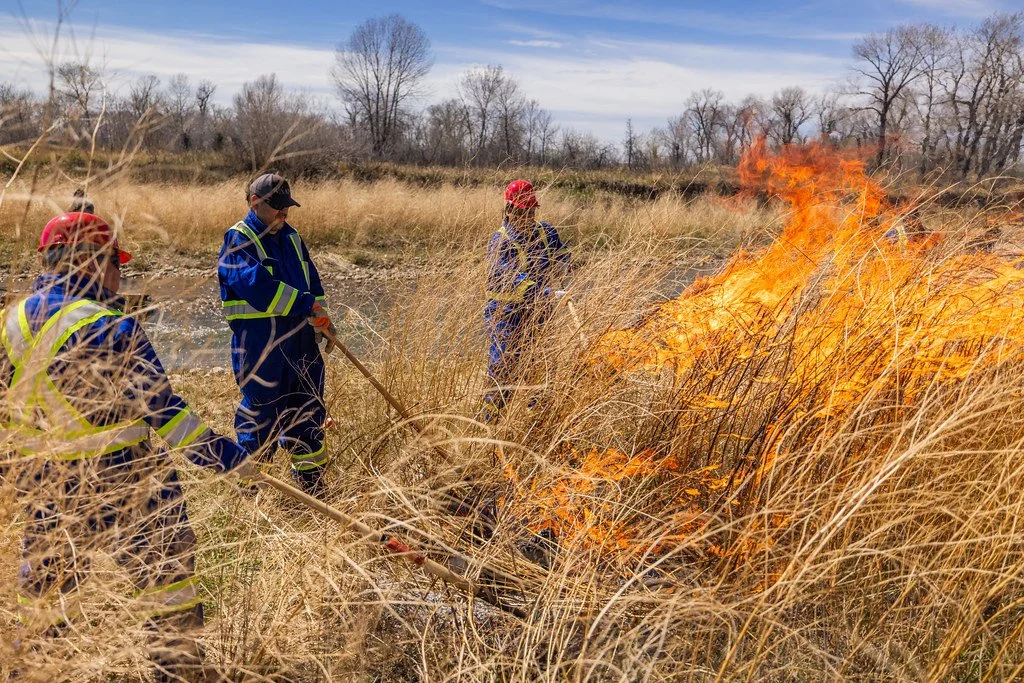Hill Times: When will Canada embrace Indigenous-led wildfire solutions that we know work?
Blood Tribe Guardians undergo fire training. Credit: Blood Tribe
Indigenous Fire Guardians are year-round, community-based experts focused on land stewardship, cultural burning, fire prevention, emergency response, and post-fire recovery.
August 13, 2025
Hill Times Op-ed by Dr. Amy Cardinal Christianson, Chief Conroy Sewepagaham, Frank Brown
Smoke from wildfires is once again blanketing much of the country, and scores of communities are in harm’s way. This year is on track to be the second worst Canadian fire season on record.
To help manage this new era of fire, the Government of Canada has made multiple funding announcements related to wildfire in the last year, including $48 million towards the “Build and Mobilize Foundational Wildland Fire Knowledge” program.
This summer's round of funding announcements follows a familiar pattern. News releases underscore the disproportionate impact of wildfire on Indigenous Peoples - research shows 42 per cent of wildfire evacuations occur in Indigenous communities. And yet little funding goes directly to Indigenous Nations or organizations.
Since 2022, the federal government has distributed $791 million for wildfire activities, which does not include emergency response spending. Only 6% has gone directly to Indigenous Nations or organizations - that small fraction is spent on entry-level firefighter training (11%) or reforestation efforts post-fire (78%).
Indigenous Services Canada has an obligation to provide funding to First Nations for emergency management. Still, it continues to spend the vast majority on response and recovery efforts rather than significantly investing in established Indigenous-led risk reduction strategies.
Canada has limited funds for wildfire, and in the face of economic uncertainty and yearly destructive fire seasons, we have to steward these resources wisely. Many Indigenous-led initiatives are often overlooked. Indigenous Fire Guardians are one of those Indigenous-led solutions that generate a high return on investment and provide multiple benefits.
Indigenous Fire Guardians are year-round, community-based experts focused on land stewardship, cultural burning, fire prevention, emergency response (including firefighting), and post-fire recovery. Fire Guardians do everything from removing brush around houses to applying "good fire" in fall and spring as a proven way to restore plant diversity and promote healthy landscapes that reduce the risk of high-intensity fires becoming far too familiar in Canadian summers.
Indigenous Fire Guardians are not new. In Australia, Indigenous Rangers manage Aboriginal territory, and thanks to their work, devastating bushfires were cut in half on the mostly Aboriginal lands of northern Australia. In the United States, programs like the Karuk Department of Natural Resources have demonstrated huge beneficial changes, like reducing wildfire risk through improving forest health. California recognized the Karuk's success by allocating USD 10 million to build an Indigenous-led fire training centre.
In Canada, the Prince Albert Grand Council Youth Fire Guardians and the Blood Tribe Fire Guardians are alreadyhaving a positive impact on revitalizing Indigenous fire stewardship practices for cultural benefit and fire reduction. But the level and extent of government investment fall far short.
Despite limited resources, Indigenous Nations are valued partners for wildfire management agencies, especially in times of overwhelm. Alberta Wildfire, for instance, repeatedly highlighted the benefits of working with Little Red River Cree Nation firefighters last year. Local crews knew the territory better than outsiders, directing where to create fire breaks or river crossings.
Read the full op-ed at the Hill Times site here.


